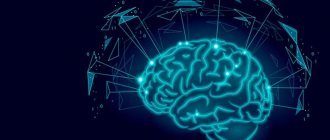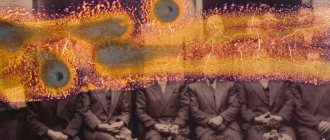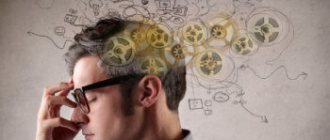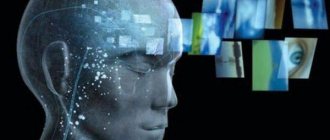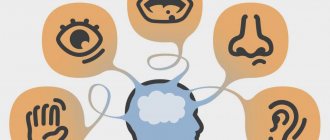Article for the “bio/mol/text” competition: Have you ever caught yourself thinking that an event that just happened or the place you are in seems very familiar to you? But you know for sure that this is impossible. It happens that you’ve already seen this street, these people, and you know what your interlocutor will answer. What is this? Memory trick or memories from a past life? The described situation received the French name “déjà vu,” which literally means “already seen.” According to large studies, déjà vu is reported in 30–96% of the population. This mysterious phenomenon has interested researchers from various fields of science for decades. So what is it?
Note!
This work was published in the “best review article” category of the “bio/mol/text” competition 2015.
The sponsor of the nomination “Best article on the mechanisms of aging and longevity” is the Science for Life Extension Foundation. The audience award was sponsored by Helicon.
Competition sponsors: Biotechnology Research Laboratory 3D Bioprinting Solutions and Scientific Graphics, Animation and Modeling Studio Visual Science.
From past to present
The term “déjà vu” was first used at the beginning of the 20th century by the French psychologist Emile Boirac in his book “Psychology of the Future.” The author used this term to reflect the concept of derealization, which implies a violation of the perception of reality, accompanied by a feeling of unnaturalness and unreality of the environment. Simultaneously with déjà vu, other phenomena were described [1] related to derealization disorders [2–5]:
déjà vécu (if deja vu is the visual perception of information, then déjà vécu is at the level of feelings and emotions; “already experienced”);
déjà entendu (auditory perception, “already heard”);
déjà baisée (motor, sensory, “already tried”);
déjà lu (superimposition of images perceived through reading, “already read”);
déjà eprouvé (emotional perception, “already experienced”);
jamais vu (jama vu, the inverse of the term “déjà vu” - “never seen”).
All these phenomena occurred quite often, and, like many phenomena that are difficult to find an explanation, déjà vu quickly became covered in a veil of secrecy, which many scientists tried and are trying to uncover. Explaining the occurrence of a specific déjà vu is a difficult, sometimes impossible task, because it is impossible to predict the exact time of manifestation of the phenomenon, and it is not so easy to cause it artificially. And since it is difficult to explain this entire complex of phenomena using scientific methods, a large number of dubious theories and incredible, sometimes mystical assumptions arise.
When does it become a manifestation of the disease?
How to recognize whether jamevu is a sign of banal fatigue and lack of sleep, or is it time to sound the alarm and it’s a serious matter?
In itself, this symptom does not pose anything dangerous, but it is very important to recognize an impending illness or attack in time
The frantic pace of life, regular stress, lack of sleep, poor nutrition - all this affects the psyche and brain function. Most people have encountered a similar phenomenon at least once in their lives and there is nothing terrible about it
However, if this symptom occurs frequently, then special attention should be paid to it.
There are a number of specific signs of diseases in which jamevu is one of the symptoms of a serious disorder in the functioning of the brain and a reason for immediate seeking medical help.
Let's take a closer look at each of these signs:
- the presence of delusional ideas and thoughts;
- auditory and visual hallucinations;
- memory losses;
- frequent mood swings from deep depression to euphoria;
- unkempt or defiant appearance;
- lack of emotional contact with others;
- frequent dizziness and headaches;
- muscle cramps and spasms.
If at least one of the above symptoms is detected in combination with periodically occurring jamevu, it is a dangerous sign. It is necessary to undergo examination by a neurologist and psychiatrist. Any disease is best treated in its early stages.
Memory of past lives
The first attempts to explain the phenomenon of déjà vu were associated with the emergence of irrational interpretations and hypotheses. There is a theory that every person has a so-called gene archive, in which the ancestral memory is preserved - the memory of parents, grandparents, all ancestors down to the founders of the human race. Based on this theory, déjà vu is “reading” pieces of the memories of our ancestors.
There is a similar theory of déjà vu - based on the doctrine of multiple transmigration of the soul. From time immemorial, people believed in life after death - afterlife or reincarnation. Subsequently, this idea was chosen by many philosophical schools. One of the first philosophers to become interested in the phenomenon of déjà vu was Pythagoras, who claimed that he could remember moments and events from his past lives. This point of view was shared by the equally famous ancient Greek philosopher Plato. He believed that the spiritual component of a person, before entering the body, contemplates the world, “remembers its past lives.” And the phenomenon of déjà vu is a reminder of the path that the soul chose when it was reborn in your body.
These two theories echo the concept of the collective unconscious developed by Carl Gustav Jung. The Swiss psychiatrist and philosopher said that as a young man, while visiting, he saw an old porcelain figurine depicting a doctor. The figurine was unfamiliar to him, but he recognized the doctor’s shoes as shoes that allegedly once belonged to him. Then he came to the conclusion that in a past life he was a doctor.
The theory based on the belief in reincarnation is still popular today. Its author is hypnotherapist and regression therapist Dolores Cannon. She developed a hypnosis technique that allows patients to be put into a trance and receive historical information.
The Staircase Mind (L'esprit de l'Escalier)
Ladder intelligence or staircase wit is a state where you come up with a clever solution or answer when it is already too late
.
This could be a retaliatory attack on an insult, a witty remark that comes to mind when it has already become useless. It's like you're "on the stairs leaving the stage."
The German language uses the word "treppenwitz" which expresses the same idea, but in modern language it refers to events or facts that are contrary to their basis or context. In Russian the phrase “ is strong in hindsight”
«.
Prophetic dreams or the work of the subconscious?
The theories presented above are supported by representatives of parapsychology - a pseudo-scientific discipline that studies various anomalous phenomena from the category of extrasensory perception, reincarnation, telekinesis, etc., the reliability of which, under conditions of adequate control, science rejects.
Material scientists are trying to explain the déjà vu effect with more logical hypotheses. Suppose we are worried about some situation (and its outcome). And the longer we think about it, the more likely it is that we will dream about it. This is logical because while we sleep, our brain will process various possible outcomes and imagine them in our dreams. As you know, dreams reflect information processed by the brain that was received in the past. However, not everything we see in a dream is remembered. Only a few vivid episodes are etched into our memory. It is precisely these episodes that can flare up as a vivid memory in the form of the phenomenon of déjà vu.
This idea was first developed in his writings in 1896 by University of Colorado psychology professor Arthur Allin (State University of Colorado, Boulder), who argued that the feeling of déjà vu occurs when dreams “come true.” Sigmund Freud also held a similar point of view. He explained déjà vu by the coincidence of what is happening with scenes from forgotten dreams (in which, in turn, forgotten facts from the past can emerge) or our subconscious images and ideas [6].
New - well forgotten old
There is a hypothesis according to which déjà vu is a memory failure. Short-term memory can store from 5 to 9 elements, ranging from a second to several minutes. All other information that is constantly used is stored in long-term memory. Imagine that you are sitting in a school office at a desk, listening to a teacher’s story. At this time, short-term memory processes all the objects and images seen. Only a certain part of them ends up in long-term memory: for example, the image of a teacher, a podium, a school board. A few years later you find yourself in a university lecture hall. You see the same objects as in the school office: a teacher giving a lecture, a podium. And at this moment, déjà vu occurs - since the stimuli were not objects identical to those previously seen, but the general similarity of the new environment with the one encountered earlier. That is, a global comparison has occurred.
It is the failure of the process of comparing new information received with that already stored in long-term memory that serves as the basis for the occurrence of déjà vu. Scientists called this a “breakdown in the source monitoring system.” There is an assumption that the cause of the failure lies in the disruption of the synthesis of the “memory protein” - Arc ( activity-regulated cytoskeleton - associated protein ). This protein was first characterized in 1995, and defects in its synthesis have since been linked to a number of neurological disorders. Researchers from the University of California (San Francisco) in their article in Nature Neuroscience [7] suggest that Arc acts as the main cellular regulator of memory, modulating synaptic plasticity depending on incoming stimuli and participating in the process of transferring information from short-term memory to long-term memory . If its synthesis or functioning is disrupted, then our brain may make a mistake and mistake something new for what has already been seen.
Causes
Official medicine considers the recurring effect of jamevu to be a sign of cryptomnesia, or a distortion of memory and perception, due to chemical or physiological disorders of brain activity.
The most common causes of jamevue are:
- Senile psychosis is the most common cause of this disorder.
This disease affects older people over 60 years of age due to the natural aging processes of the brain. Characterized by increased irritability and high levels of anxiety, as well as memory and perception disorders. - Epilepsy. Chronic brain disease. Characterized by sudden seizures, mood disorders, delusions and hallucinations. There are both congenital and acquired forms of epilepsy.
- Neuroses, hysteria and other neurotic personality disorders.
- Schizophrenia. A mental disorder characterized by a breakdown in thinking and perception. Jamevue may appear as part of a delusion or as a separate symptom in a person with schizophrenia.
- Chronic stress and prolonged psycho-emotional tension. In difficult conditions, the brain experiences overload, as a result of which the perception of individual objects or phenomena may be distorted.
- Overwork.
- Alcoholism and alcohol withdrawal.
- Addiction.
Is stress to blame again?
Some researchers see the cause of the déjà vu phenomenon in brain trauma. And it doesn’t have to be physical trauma. A severe stressful situation is sometimes enough to disrupt our “on-board computer’s” perception of the past and present. Impaired functioning of the right or left hemisphere of the brain can cause the left hemisphere, which is responsible for memories, to become more active than the right hemisphere, which is responsible for processing new information. This can lead a person to perceive the present as the past. Such problems can happen at any age. However, scientists associate the occurrence of déjà vu with the emergence of an identification crisis in adolescence (15–18 years) and middle age (30–35 years) [8, 9].
Well this one, what's his name
If previous distortions of memory and consciousness among healthy people are, fortunately, quite rare, then absolutely everyone experiences presquel - and, moreover, quite often.
This condition is partly related to the previous ones - it also refers to memory distortions, but has a slightly different nature. To give a simple definition, presquevue is that same feeling when you try to remember the name of a doctor’s instrument, which “well, this one, what’s his name, with an “he”, and then it turns out that it’s a phonendoscope - and there’s no letter “x” there even close No. The same thing with the name of “that actor who played the chubby guy in The Bachelor Party” and the breed of cats with short legs. It’s right on the tip of your tongue, but you can’t say it. Scientists explain this brain trick in different ways. Some argue that the correct word prevents us from naming another, incorrect, but retrieved from memory faster. This hypothesis was also supported by Sigmund Freud.
Another reason may be that the search for certain words and the images they evoke trigger a chain of disturbing memories and associations in our minds, which displace the desired word. This phenomenon was described by Jung, citing the example of a certain man who was reciting the poem “In the Wild North” and stumbled on the line “... and slumbers, swinging...”, unable to remember the next line: “... and she is covered with loose snow, like a robe.” . Jung told him this line and asked the man to describe the thoughts that “snow” and “robe” brought to him. The man gave out a whole chain of associations with his brother’s deceased friend, his late grandfather, problems with excess weight and his fears of sudden death.
By the way, with age, in some people, the amount of prescuevus increases sharply - but this is associated with direct physiological changes in the brain and memory impairment. But you can keep your brain in impeccable shape - our article will help you with this.
Common pathology
Many scientists interpret déjà vu as the body’s reaction to unfavorable endogenous and exogenous conditions: stress, illness, overwork, physical trauma, sleep disturbance, and the like [5, 10, 11]. However, from the point of view of psychiatrists, déjà vu is a harbinger of mental disorders, pathologies of parts of the brain, for example, in epilepsy, schizophrenia, depression, Charles Bonnet syndrome [4, 5, 8, 12, 13]. For a long time it was believed that it was impossible to cause this phenomenon experimentally. The first data on the occurrence of déjà vu in laboratory conditions appeared in 1955, when the Canadian neurosurgeon Wilder Penfield, conducting electrical stimulation of various subcortical structures in patients with epilepsy, recorded the occurrence of déjà vu in 8% of patients [6].
In 1982, Dr. Pierre Gloor, using stereotaxic electrodes, also stimulated the brains of patients suffering from temporal lobe epilepsy. In 35 patients, the doctor and his colleagues stimulated the hippocampus, amygdala, parahippocampal gyrus, and temporal cortex with electrical impulses. As a result, four participants in the experiment experienced déjà vu [14].
Thanks to experimental studies of this phenomenon [6, 14, 15], scientists came to the conclusion that the mechanism of déjà vu and the structures involved in it are similar in healthy people and patients with pathologies of the nervous system. Four structures responsible for this phenomenon have been identified: the superior temporal gyrus, the hippocampus, the amygdala and the parahippocampal gyrus [3, 9]. Based on these results, a new theory of déjà vu arose, the meaning of which is a violation of the processes of memory and perception [16]. This theory is currently the most adequate, and it is adhered to by most scientists.
When we perceive any stimulus in the form of visual information, a signal about this from the corresponding receptors arrives along the visual tract to the primary sections of the visual cortex (Fig. 1a), where the analysis of stimuli occurs. The information is then processed in the secondary visual cortex, where generalization occurs, which determines the processes of perception. Next, the stimulus is sent to the dorsomedial visual area, the posterior part of the parietal cortex. This pathway is called the dorsal visual pathway and is associated with motion analysis and information about object localization [13]. At the same time, visual information from the secondary visual cortex is sent to the lower part of the temporal lobe. This pathway is called the ventral visual pathway and is responsible for the processes of recognition, object representation, and is also associated with long-term memory. However, the signal from visual receptors is sent not only along the dorsal and ventral pathways - in other words, along the “action” and “recognition” channels [17] - but also to the limbic system: the amygdala, parahippocampal gyrus, hippocampus (Fig. 1b). This is where unconscious emotional processing of visual information occurs. Déjà vu occurs when these processes are desynchronized - when unconscious information processing occurs faster: a “request” to long-term memory already passes through the limbic system, resulting in an emotional response to a visual stimulus, and only then does belated visual information, “advancing”, arrive and also require processing " along the ventral and dorsal pathways. And since an object or situation is more quickly “represented” to the brain through the unconscious pathway, repeated processing through the visual pathways causes the “previously seen” effect.
Figure 1. Cortical and subcortical pathways involved in vision and emotion. a — Primary visual pathway: primary visual cortex (V1), lateral geniculate nucleus (LGN), thalamus (Th). From V1, visual information spreads to the extrastriate visual cortex through the ventral and dorsal pathways. However, there is also a small portion of fibers originating in the retina (thin arrows) that reach the extrastriate cortex, bypassing V1. To make this possible, subcortical structures such as the pulvinar and superior colliculus (SC) redistribute fibers so that they go directly to the extrastriate cortex. b - The “emotional system” includes many cortical and subcortical structures. These include the amygdala (AMG), substantia innominate (SI), nucleus accumbens (NA), brainstem nuclei (in yellow) - periaqueductal gray matter (PAG) and locus coeruleus (LC). Among the cortical areas (marked in red) are the orbitofrontal cortex (OFC) and the anterior cingulate cortex (ACC). The visual and "emotional" systems are very strongly connected, especially at the subcortical level, as the superior colliculus (SC) interacts with the amygdala (AMG) through the pulvinar (Pulv). Gray arrows display connections within the “emotional” system.
Is it possible to induce this feeling on purpose?
In one early study of this phenomenon, 90 subjects were asked to write the same word 30 times. All participants in the experiment noted a distorted perception of the word when repeated multiple times.
This effect can be noted by anyone who repeats any word or phrase more than ten times. Their sound will seem strange and unfamiliar. We can conclude that there is a certain pattern in the functioning of the brain and the effect of jamevu.
Scientists tend to consider this unusual disruption of perception as a natural defense of the brain from unnecessary information and overload. The pace of information processing slows down, as a result of which the familiar environment is perceived as unfamiliar and foreign.
Perhaps, at a moment of severe stress or overload with unnecessary information, the brain triggers defense mechanisms, which results in jamevu. Prolonged lack of sleep can also cause this sensation.
The versatility of déjà vu
Despite the variety of theories explaining the mechanism of déjà vu, scientists have not yet come to a consensus. This means that the phenomenon of déjà vu to this day remains an attractive and mysterious phenomenon, fraught with many unexplained things. But today we can say that everything connected with this phenomenon is important for every person - regardless of what it reflects: the reincarnation of the soul, a surge of the subconscious, an excerpt from a dream or a hidden anomaly. Therefore, the most serious discoveries are yet to come. And if you are lucky enough to see the world “stopped” for a couple of moments, think about it, analyze why this event happened, and perhaps you will discover something new for yourself, because it’s not for nothing that there is a saying: “Everything new is a well-forgotten old "
Dream
According to another hypothesis, déjà vu duplicates situations from dreams, rather than those experienced in reality. Of those surveyed, 20% reported that the memories that came to them during déjà vu came from dreams, some even experienced the effect during a night's rest. Research also supports a connection between remembered dreams and this phenomenon.
Another option is “prophetic dreams,” which allow a person to rehearse a situation from the future that the subconscious predicts for him. Such dreams are associated with events that he expects or, conversely, fears. Followers of this theory believe that in this way the subconscious prepares the individual for the most likely outcome. When the action finally takes place in reality, déjà vu occurs.
A similar explanation for the effect is given by adherents of Islam, Muslims. According to their belief, déjà vu means a consequence of a warning from above that is given to a person in a dream. This is done by the Creator, who has the ability of clairvoyance. Often people forget the vision when they wake up in the morning. And then, when they experience what was predicted in real life, they feel that they have already seen it before. Muslims themselves explain what is described above by the close connection of man with the world of metaphysics.
Literature
- Carson R., Butcher J., Mineka S. Abnormal psychology. St. Petersburg: Peter, 2004. - 1167 pp.;
- Dobrokhotova T.A., Bragina N.N. Functional asymmetry and psychopathology of focal brain lesions. M.: Medicine, 1977. - 359 pp.;
- Adachi N., Koutroumanidis M., Elwes R. D. C. (1999). Interictal 18FDG PET findings in temporal lobe epilepsy with déjà vu. J. Neuropsychiatry Clin. Neurosci. 11, 380–386;
- Sno H. N. and Linszen D. H. (1990). The déjà vu experience: remembrance of things past? Am. J. Psychiatry. 147, 1587–1595;
- Warren-Gash, C. and Zeman, A. (2003). Déjà vu. Pract. Neurol. 3, 106–109;
- Kurgan A.A. The phenomenon of deja vu. St. Petersburg: Dmitry Bulanin, 2010. - 154 p.;
- Korb E., Wilkinson C. L., Delgado R. N., Lovero K. L., Finkbeiner S. (2013). Arc in the nucleus regulates PML-dependent GluA1 transcription and homeostatic plasticity. Nat. Neurosci. 16, 874–883;
- Rybin D.N. Value-semantic determination of the phenomenon of derealization: dis. ...cand. psychol. Sci. - Barnaul, 2005. - 156 p.;
- Brown AS (2003). A review of the déjà vu experience. Psychol. Bull. 129, 394–413;
- Jackson JH and Colman W S (1898). Case of epilepsy with tasting movements and “dreamy state”: very small patch of softening in the left uncinate gyrus. Brain. 21, 580–590;
- Neppe V. M. (1983). The concept of déjà vu. Parapsychology Journal of South Africa. 4, 1–10;
- Karlov V.A. (2007). Mental disorders in epilepsy. Annals of Neurology. 2, 9–16;
- Richardson T. F. and Winokur G. (1967). Déjà vu in psychiatric and neurosurgical patients. Arch. Gen. Psychiatry. 17, 622–625;
- Gloor P., Olivier A., Quesney L.F., Andermann F., Horowitz S. (1982). The role of the limbic system in experiential phenomena of temporal lobe epilepsy. Ann. Neurol. 12 (2), 129–144;
- https://biomolecula.ru#;
- Spatt J. (2002). Déjà vu: possible parahippocampal mechanisms. J. Neuropsychiatry Clin. Neurosci. 14, 6–10;
- Goodale M. A. and Milner A. D. (1992). Separate pathways for perception and action. Trends Neurosci. 15 (1), 20-25..



